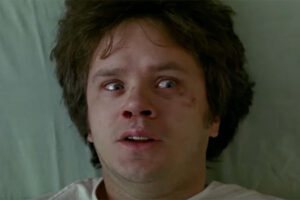
When we think of animated children’s movies, we often imagine heartwarming tales filled with laughter, love, and life lessons. However, every once in a while, a film comes along that challenges these expectations, presenting themes and imagery that might be more suited for a mature audience. “All Dogs Go to Heaven” is one such film.
Released in 1989 and directed by Don Bluth, this movie, while cherished by many, delves into surprisingly dark and traumatic territories.
At first glance, it appears to be a delightful tale about dogs, complete with catchy musical numbers. However, a deeper look reveals a narrative riddled with dark themes and unsettling imagery that might be too intense for its intended young audience.
Delving into the Dark
The film’s plot is a far cry from the usual light-hearted adventures we expect from children’s animations. Central themes revolve around heavy topics such as murder, revenge, gambling, and drinking. The story kicks off with the death of the protagonist, Charlie, setting a somber tone that persists throughout the film. This exploration of mortality and grief is a departure from the norm, challenging young viewers to grapple with concepts they might not fully understand.
Charlie’s escape from heaven and return to Earth not only adds a layer of adventure but also delves into complex theological territory. The idea that one can cheat death and the portrayal of the afterlife might raise more questions than parents are prepared to answer.
Haunting Imagery
The visual elements of “All Dogs Go to Heaven” further amplify its mature themes. The film doesn’t shy away from presenting scenes that could be downright terrifying for children.
The hell scene in “All Dogs Go to Heaven” is one of the most memorable and haunting sequences in the film. This nightmarish vision is presented when Charlie experiences a dream (or perhaps a premonition) of what awaits him if he doesn’t change his ways.

The scene begins with a surreal, ominous atmosphere. The ground beneath Charlie crumbles, and he finds himself plummeting into a fiery abyss. As he descends, monstrous, demonic creatures emerge from the flames, their eyes glowing and their intentions clearly malevolent.
The imagery is intense: lakes of fire, tormented souls, and monstrous figures that seem to be a fusion of machine and beast. The centerpiece of this hellscape is a massive, red, dragon-like creature that appears to be the embodiment of evil itself. Its presence is overpowering, and its intent is clear: to claim Charlie’s soul for eternity.
The cacophony of tortured screams, the intense heat, and the relentless pursuit by the demonic entities create a sense of urgency and dread.
Given the mature and intense nature of this scene, it’s not surprising that it raised concerns during the film’s production and rating process. To avoid receiving a PG rating, which might limit the film’s target audience, certain elements of the hell scene were reportedly toned down or cut. The objective was to ensure that the film maintained its G rating, making it more accessible to younger audiences. However, even with these modifications, the scene remains one of the most discussed and debated aspects of the movie.
Complex Relationships

The dynamics between characters in the film are equally intricate. Charlie’s relationship with Anne-Marie, a young orphan, might seem heartwarming at first. However, the significant age gap between them, combined with the underlying manipulative behavior exhibited by Charlie, casts a shadow over their interactions. Charlie’s repeated deceit and exploitation of Anne-Marie’s unique abilities for his personal gain paint a picture of a relationship built on shaky ground.
Carface, the primary antagonist, embodies the film’s dark essence. His repeated attempts to end Charlie’s life through various violent means, such as drowning and crushing, add a layer of brutality that’s hard to reconcile with the film’s G rating.
The Controversy of its Rating
It’s baffling to many that such a film, with its mature content, received a G rating and was directly marketed to children. While the animation style is vibrant and engaging, the content is undoubtedly more suited for older viewers who can navigate its intricate themes.
The film’s unsettling visuals and narrative have the potential to leave lasting impressions, making it a prime example of a children’s movie that perhaps ventured too far into the realm of the macabre.
In Conclusion
“All Dogs Go to Heaven” is a testament to the evolving standards of children’s entertainment. While it remains a classic, parents and guardians should approach it with caution, understanding its depth and the potential questions it might raise.










Leave a Reply